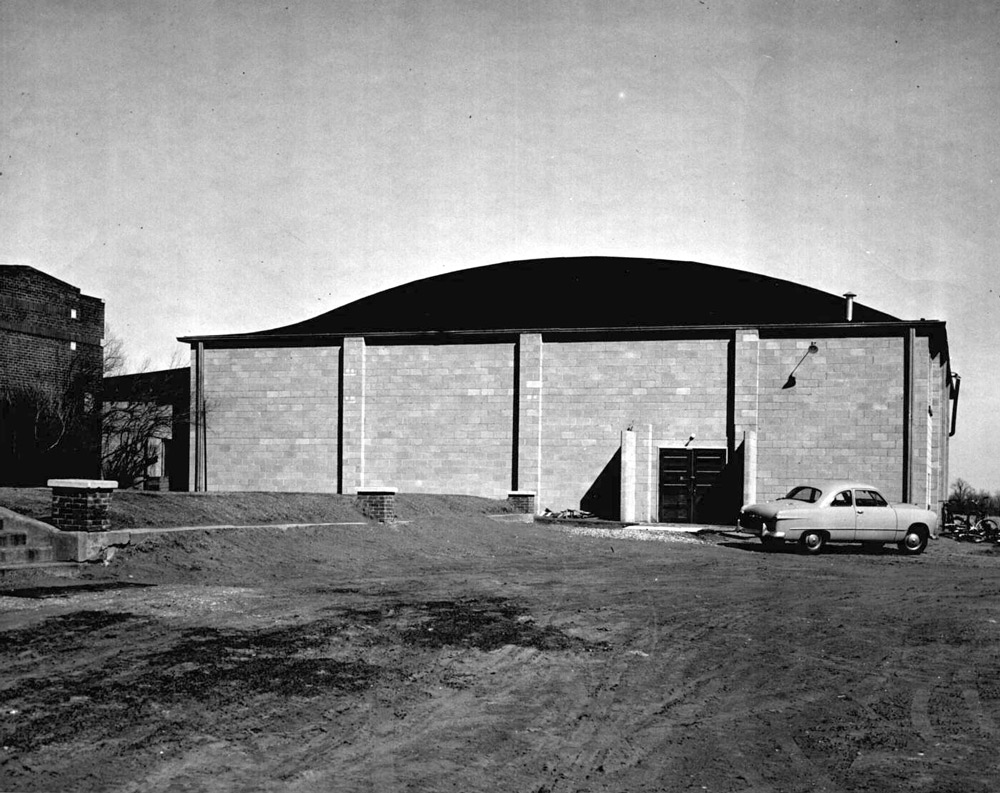MUSTANG.
Mustang is located in the southeastern corner of Canadian County, on the outskirts of Oklahoma City. State Highways 4, 92, and 152 traverse the town. The Mustang post office was established in 1895 by E. M. Maxwell. While many families settled in the vicinity, an official town took six years to develop. In November 1901 Charles G. Jones, former mayor of Oklahoma City, filed the plat that formally established the community of Mustang. The town had market access by virtue of its location on the line of the Oklahoma City and Western Railroad, built from Oklahoma City to Chickasha in 1901–02 (later part of the St. Louis and San Francisco, or Frisco, system).
During the first half of the twentieth century agriculture fueled Mustang's development. A variety of crops were grown in the area, including wheat, oats, corn, cotton, sweet potatoes, watermelons, and cantaloupes. Until the 1920s peach and other fruit orchards were the primary crops for local farmers. Truck farming remained prevalent into the 1940s, when the dairy and beef industry gained supremacy. Beginning in the 1960s Mustang began to attract residents working in factories in nearby Oklahoma City. The resulting status as a "bedroom" community of Oklahoma City continues to spur commercial development within the town.
Until 1960 Mustang's population remained in the hundreds. In 1930 the town claimed just 107 residents. While the trying years of the 1930s resulted in an exact doubling of Mustang's population, the 1940s were markedly stable, with a 1950 population of 210. In 1960 the number of inhabitants fell just below 200. Experiencing prodigious growth in the 1960s, the population skyrocketed to 2,637 in 1970 and nearly tripled over the next decade. In 1980 7,496 citizens called Mustang home. Continuing to expand, the town recorded 10,434 residents by 1990 and 13,156 ten years later. The 2010 census recorded the town's number of inhabitants at 17,395.
Since 1988 the Mustang News has served the community. Other local newspapers have included the Mustang Enterprise, which had two separate runs, from 1906 through 1914 and again from 1983 thorough 1988, and the Mustang Mirror, which published the local news from 1967 until 1983. The earliest newspaper in Mustang, from 1902 through 1905, was the Mustang Mail. The city currently operates under a council-manager form of government. The April 2020 census reported a population of 19,887.
See Also
Learn More
History of Canadian County Oklahoma (El Reno, Okla.: Canadian County History Book Association, Inc., 1991).
Nora Lorrin, "Mustang," in "Mustang," Vertical File, Research Division, Oklahoma Historical Society, Oklahoma City.
Related Resources
Citation
The following (as per The Chicago Manual of Style, 17th edition) is the preferred citation for articles:
Cynthia Savage, “Mustang,” The Encyclopedia of Oklahoma History and Culture, https://www.okhistory.org/publications/enc/entry?entry=MU024.
Published January 15, 2010
Last updated March 25, 2024
© Oklahoma Historical Society


